CuriosiD: How do you catch fish in the Detroit River? And are they safe to eat?
Laura Herberg June 8, 2023In this episode, we head down to the Detroit River to see how people fish. Plus, we talk to a toxicologist about whether or not the fish are safe to eat.
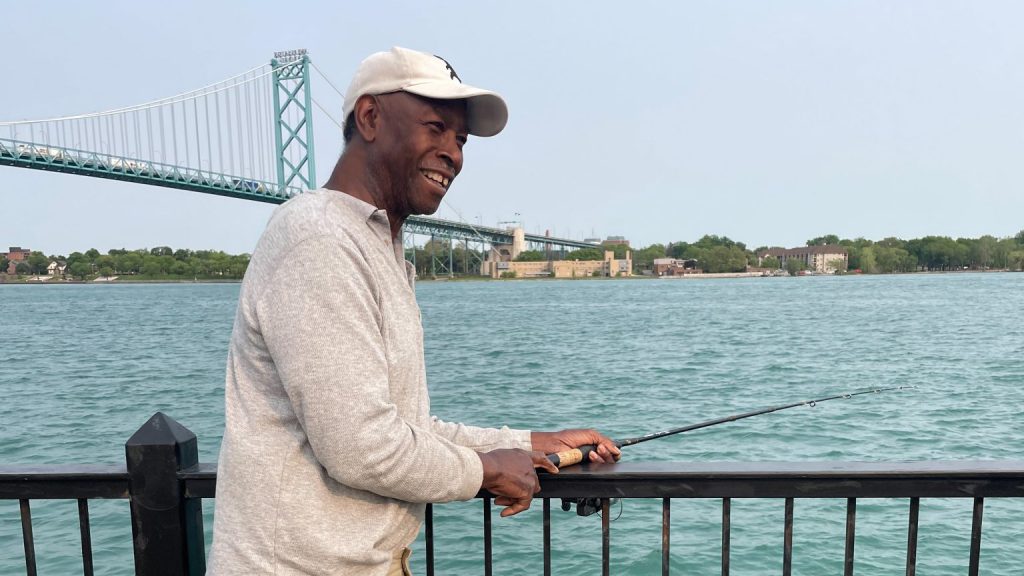
Bo Keyes fishes in the Detroit River.
WDET’s CuriosiD series answers your questions about everything Detroit. Subscribe to CuriosiD on Apple Podcasts, Spotify, NPR.org or wherever you get your podcasts.
In this episode of CuriosiD, we answer the questions:
“How do you catch fish in the Detroit River? And are they safe to eat?”
The short answers
In the spring, the Detroit River sees an influx of fish. Species like walleye and white bass (commonly called silver bass) swim from Lake Erie to Lake St. Clair, stopping along the way to lay eggs in the shallow riverbed. This makes the spring — and the fall and winter when the fish swim back — great times to fish in the Detroit River. It’s prime fishing out on boats where anglers often quickly catch their limits (the maximum amount of fish they’re allowed to catch in a day based on state fishing regulations). But fishing from the shore can be good too, especially before sunrise and after sunset. Yet if you don’t reel anything in, you’re in good company. There’s a reason it’s called “fishing” and not “catching,” right?
As for whether or not these fish are safe to eat, no fish caught in the Detroit River are completely off limits. But there are fish that people in sensitive groups should avoid eating and that healthy people should only consume in limited quantities. Read on for more details.
The bait
Just south of Jefferson Avenue in Detroit, Big Moe’s Bait & Tackle has a green fish painted on the outside. Inside, the place is very organized but packed to the gills. There’s a wall of fishing rods, nets hanging from the ceiling, and rows upon rows of colorful artificial bait and tackle.
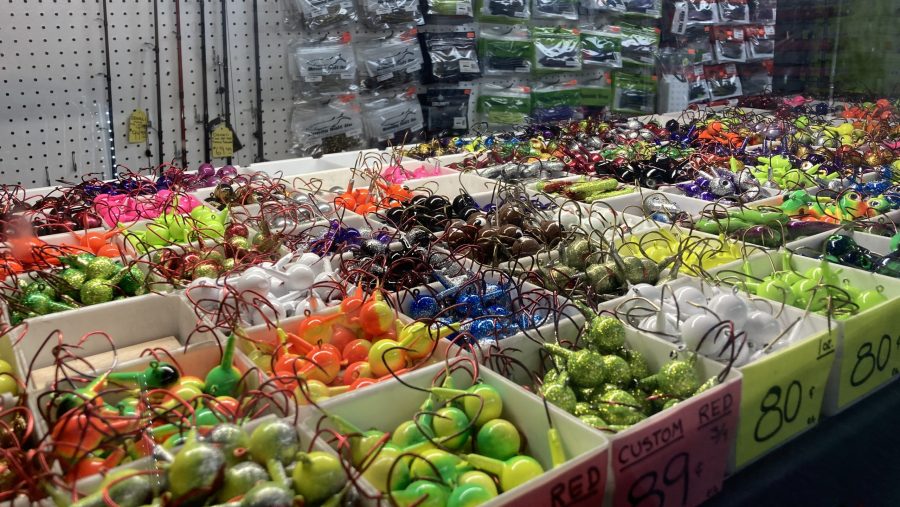
Manager Mike Noblett says what bait you choose depends on what you’re trying to catch. In the Detroit River there are over 65 species of fish including bluegill, brown bullhead, carp, catfish, crappie, largemouth bass, muskellunge (or muskies), northern pike, walleye, white bass (or silver bass), white perch and yellow perch.
“For the last couple of years, I would say walleye is probably the number one chased-after fish,” says Noblett. “The walleye is the steak in the lake. Everybody loves that fish. They love to eat them, they love to catch them.”
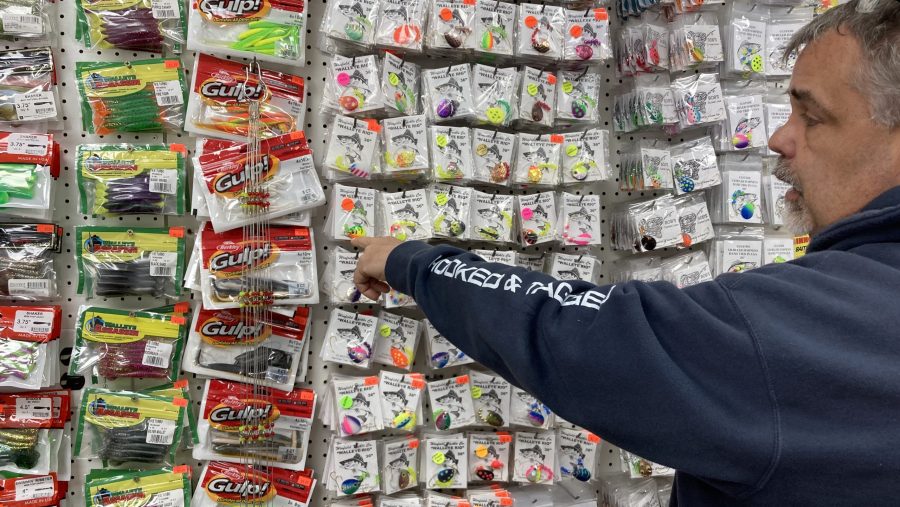
Noblett says people come from all over to fish walleye in the Detroit River. If you’re trying to catch them from the shore, Noblett recommends using a jig, which is a piece of lead attached to a hook with fake or real bait.
There are “Walleye Killers” in hot colors on display at the checkout counter. These faux fish are painted, bedazzled with glitter and assembled into jigs by Big Moe’s.
“If you’re new to fishing, this would show you the setup, how it’s supposed to be designed, how you’re supposed to attach it to your line,” says Noblett.
Noblett says Wyandotte Lure, a local company, produces Motor City Minnows and Wyandotte Worms. Bob’s Custom Lures is also from the area, and so is Winfield Tackle Co.
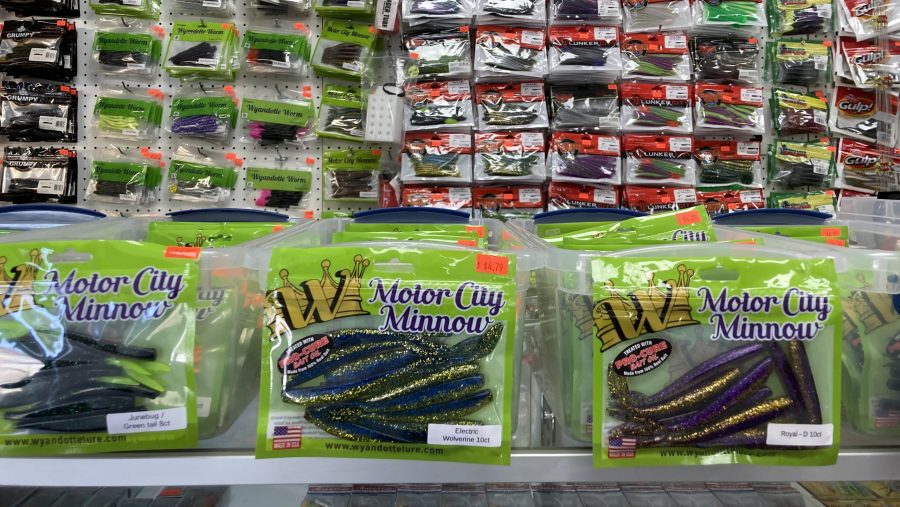
Casting out
Down on the Detroit River, semitrucks cross the Ambassador Bridge overhead while Jermaine Thomas fishes down below. He’s been down here for about an hour, using live bait, little fish called minnows, that are swimming around in a bucket.
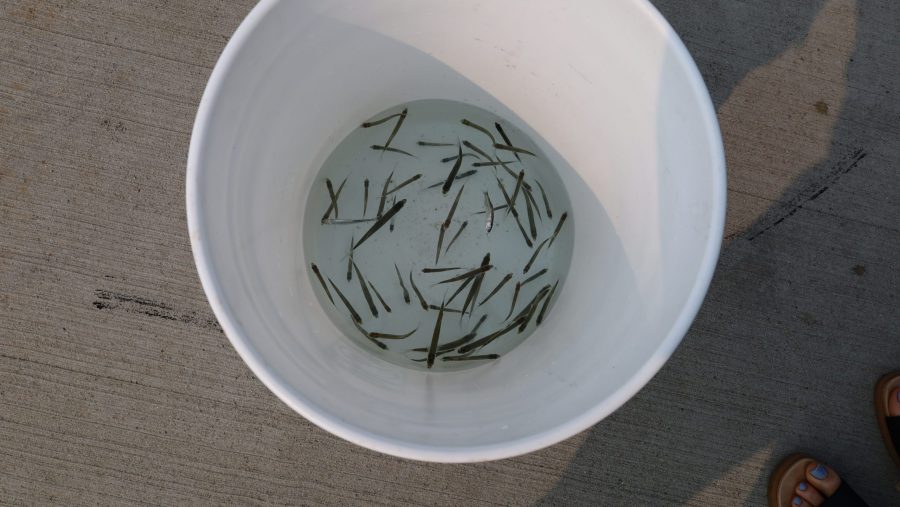
Thomas is hoping to use these minnows to catch some silver bass. He says when these fish run the river in late May and early June “you catch your limit. So like, maybe 12-13 fish when they’re comin through.”
But Thomas doesn’t think he’ll catch his limit tonight.
“They’re not biting,” he says. “So, not tonight.”
He packs up and leaves about five minutes later.
Down a little ways, Curley Harris is setting up three fishing poles while his daughters chat at a picnic table and his son Khayden runs around helping him. The 4-year-old opens up a container of worms and says “they’re chillin.” His father laughs.
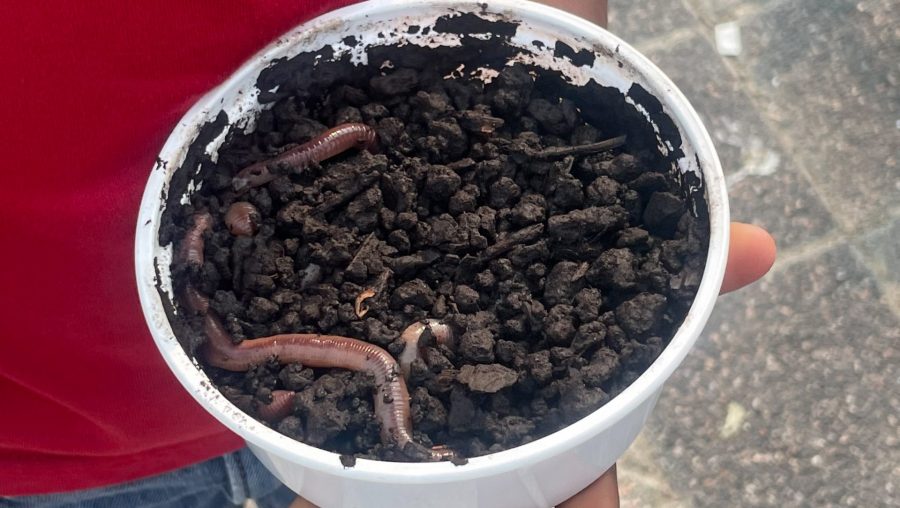
Wearing black surgical gloves, Harris picks up a razor blade and a worm and slices it in half. Then he grabs a hook and starts wrapping the worm around it.
Harris got hooked on fishing after a friend took him about 12 years ago.
“It’ll take a lot of things off your mind,” Harris says. “If you’re going through something and you want to get a peace of mind, you can come on out here, cast out your rod and just think.”
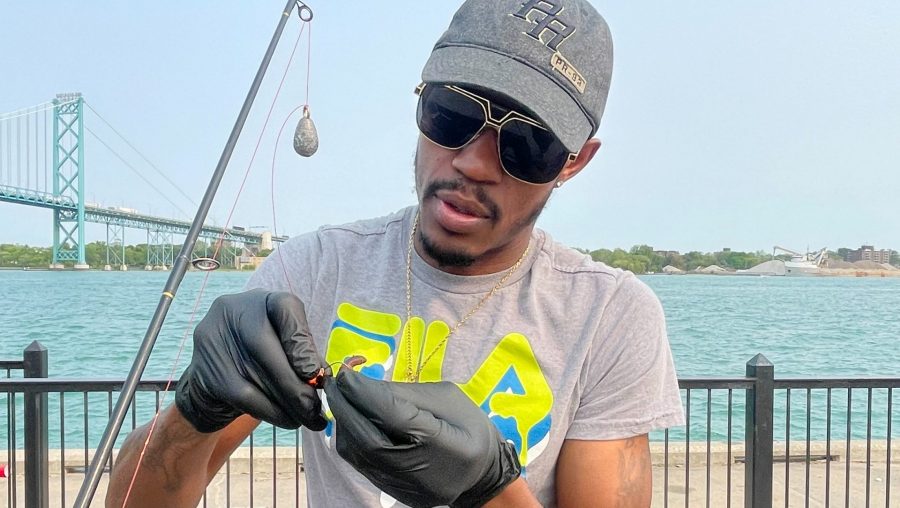
After casting out, one of Harris’ rods bends slightly.
“Somebody just took a little nibble,” he says, slowly reeling in the line. When it comes in, the worm is still on there but now two small muscles are attached. Khayden comes over to take a look and says, “ew.”
Harris shakes the hitchhikers off and casts back out.
He has this advice for someone who’s tried fishing down here but didn’t catch much:
“Don’t give up,” he says. “Throw it out there and keep trying. Make sure you have you a little care package and just chill and relax.”
Harris’ own care package consists of Smirnoff, Bud Light, his speaker and chips, juice and pizza for his kids.
A little ways down, retiree Bo Keyes is fishing with one pole as some freighters sail by.
“It’s hard to catch anything in the river. You just gotta get lucky,” Keyes says. “But yeah, we catch walleye, perch, stuff like that in the river.”
Keyes likes to use worms that he digs up in his own yard. He says he fishes often but only catches something about once a week. Yet that doesn’t deter him from coming down here.
“It’s something to do as a retiree, number one. It’s relaxing, you get to watch the boats and the ships and the people and stuff like that. It beats sitting around at home,” he says.
Are the fish safe to eat?
The Michigan Department of Environment, Great Lakes and Energy (EGLE) partners with the Michigan Department of Health & Human Services (MDHHS) to catch and test fish caught in bodies of water like the Detroit River. They publish the results in a series of Eat Safe Fish guides.
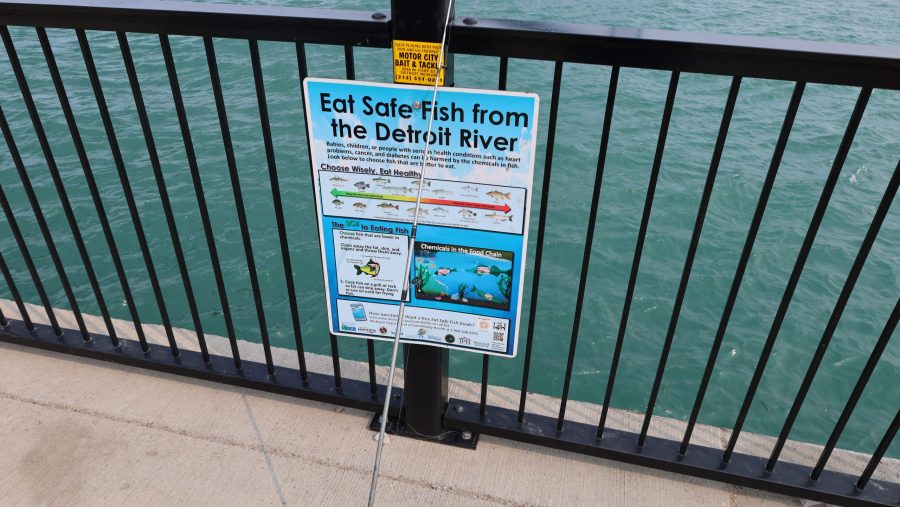
There are no fish in the Detroit River that are completely off-limits for everybody. However, there are several fish that have been found to have concerning chemicals. According to the latest guidelines, it’s recommended that people only eat four servings of rock bass or yellow perch per month, two servings of bullhead per month, one serving of northern pike per month, and six servings of walleye and suckers (size 14 to 18 inches) per year.
It’s also recommended that healthy individuals only eat the following fish, once or twice a year: carp, catfish, freshwater drum, largemouth bass, smallmouth bass and silver bass. Children under the age of 15, people who are pregnant or planning to have kids in the next few years and people who have pre-existing health conditions like cancer or diabetes should avoid eating these fish.
According to MDHHS toxicologist Brandon Reid, removing the skin and trimming the fat from the fish, and allowing the fish to cook in a way where the extra fat will melt away, like on a rack, can remove some of the chemicals found in fish.
What chemicals are in the fish?
The Eat Safe Fish guide says chemicals of concern found in fish in the Detroit River are Polychlorinated Biphenyls (PCBs), dioxins and mercury.
“PCBs and dioxins are a class of chemicals that have been phased out of use for a pretty long time,” says Reid. “They’re no longer used in industry, but they have these specific chemical properties that make them really persistent in the environment.”
According to the Environmental Protection Agency and the World Health Organization, long-term exposures to the PCBs and dioxins can cause serious adverse health effects, impairing the immune system, reproductive system, nervous system and endocrine system. As for mercury, according to the Centers for Disease Control, it can cause skin, eye, and stomach irritation, coughing, chest pain, respiratory issues, headache, insomnia, indecision, irritability, weight loss and more.
EGLE and MDHHS have also tested for per- and poly-fluoroalkyl substances (PFAS). While studies have shown that PFAS is present in fish found in the Huron and Rouge Rivers as well as the Detroit River, Reid says “it’s really the PCBs and dioxins that are of most concern for health and, as you’ll see, that’s what our guidelines are based off of for the Detroit River.”
About the listener

Jack Nagle of Ann Arbor says he knows you can catch fish in the Detroit River.
“I started seeing people posting these pictures on social media of limit catches every day of all kinds of fish,” says Nagle. “And they say, ‘Well, we’re just right out in front of the Renaissance Center… Come on out.’”
But Nagle hasn’t had the same luck fishing down there.
“I’ve tried and tried and I never can catch anything.”
Nagle, a metallurgist, which is a scientist who specializes in metals, says he’s also concerned about there being chemicals in the fish.
“I’ve heard you can eat like one a year,” Nagle says. “People cook up their fish all the time. If I caught one, I would eat one, I guess.”
We want to hear from you!
Have a general question about Detroit? Ask us here or fill out the form below.
More from CuriosiD:
- What is on Boblo Island today? And what happened to the Boblo boats?
- Could Detroit’s buried streams see the light of day?
- That waterway in Detroit, is it a strait or a river?
Support the podcasts you love.
One-of-a-kind podcasts from WDET bring you engaging conversations, news you need to know and stories you love to hear.
Keep the conversations coming. Please make a gift today.
